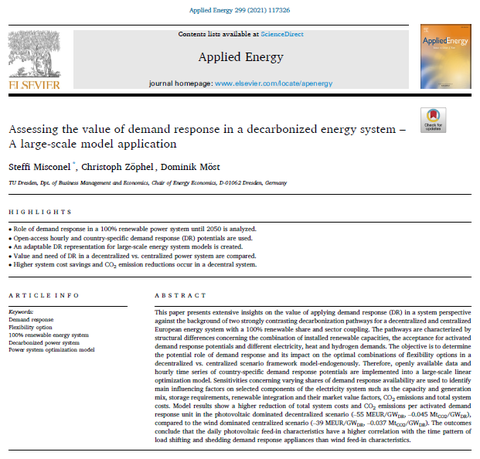Jul 08, 2021
New publication: Assessing the value of demand response in a decarbonized energy system – A large-scale model application
Steffi Misconel, Christoph Zöphel and Prof. Dr. Dominik Möst assessed the value of demand response in an energy system with high shares of renewables. Model results show a higher reduction of total system costs and CO2 emissions per activated demand response unit in a photovoltaic-dominated decentralized scenario than in a wind-dominated centralized scenario. Daily photovoltaic feed-in characteristics correlate higher with the time pattern of load shifting and shedding demand response appliances than wind feed-in characteristics. In general, demand-side flexibility shows technical and economic advantages compared to alternative flexibility options and has multiple impacts on the optimal mix of available technologies. To exploit the demand response potential assumed in our analysis, significant capacities must be installed on the consumer side in the considered countries.
The article is published in the Journal of Applied Energy and is available for free until the 26th of August 2021 at the following link: https://authors.elsevier.com/a/1dMlk15eif0eS4.
Highlights
- Role of demand response in a 100% renewable power system until 2050 is analyzed.
- Open-access hourly and country-specific demand response (DR) potentials are used.
- An adaptable DR representation for large-scale energy system models is created.
- Value and need of DR in a decentralized vs centralized power system are compared.
- Higher system cost savings and CO2 emission reductions occur in a decentral system.

